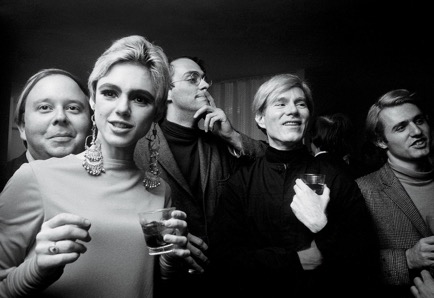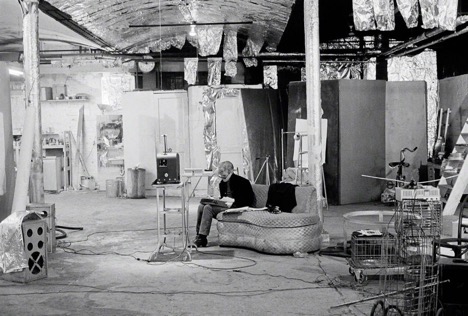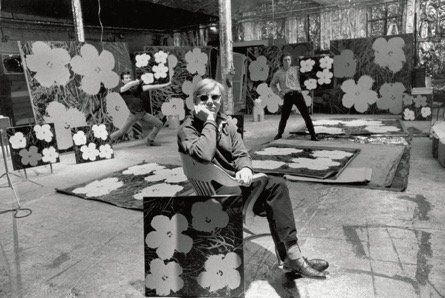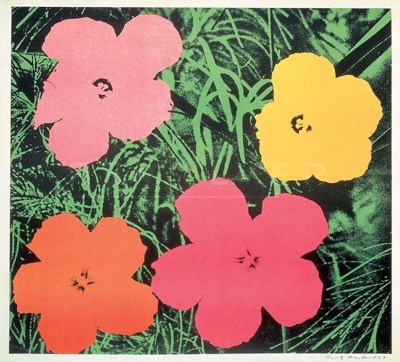Aurora Garrison | February 2018
Warhol explored and experimented with almost every means of cultural production, leaving behind an impressive artistic legacy from screen prints to full-length experimental films to sculpture.
Most commonly recognized for his 1960s Pop Art, silkscreened images of objects lifted from mainstream American life and those of Hollywood icons taken from the media, Warhol also made considerable contributions to a multitude of other areas.

His creative genius exploded into film, photography, video, and television, as well as publishing his own books and establishing Interview magazine with British journalist John Wilcock. Warhol’s multifaceted creations challenged the conventional hierarchy between artistic disciplines, perceptively raising ordinary subjects to high art and vice-versa-a – now a standard practice with contemporary artists and in today’s 21st century culture.
Nowhere in all of art history is there a more notorious, renown and legendary place celebrated as an epicenter for an art movement than Warhol’s The Factory. So famous is The Factory that its name conjures up images of all night parties, the Warhol cast of characters called the Warhol Superstars and his production-line silkscreen process.

Warhol’s Superstars were a clique of New York City personalities promoted by the artist from the 1960s and to the early 1970s. Warhol would simply film or use images of his disciples, wave his artistic wand and declare them “superstars.”
The Factory was the magnet for artists and celebrities. Warhol’s most famous superstar was Edie Sedgwick. Sedgwick and Warhol became the it-couple of 1965, but their relationship ended abruptly the following year. Warhol would continue to associate himself with New York models, artists and socialites like Viva, Candy Darling, Ultra Violet, Nico and International Velvet.
Warhol effectively launched an artistic and cultural revolution in 1963 with the founding of his Factory. In keeping with the space race of the Sixties – he developed a unique silver spaceship to launch his Pop Art – The Factory.
From 1962 to 1984 Warhol ran The Silver Factory as his artistic, silver cocoon that gave birth to the Pop Art of Warhol, the music of The Velvet Underground and the movies of Warhol. In Warhol’s 1980 book Popism: The Warhol Sixties, he provides a detailed description: “The Factory was about 50 by 100 feet, and it had windows along 47th Street looking south, just the place to launch a cultural revolution…it was basically crumbling – the walls especially were in bad shape. I set up my painting area with the workbench near the front of the windows, but I kept most of the light blocked out – that’s the way I liked it.”

Dubbed the “Silver Factory” because Warhol wrapped the entire loft in silver foil, completely covering the walls and ceilings. Surrounded by silver, artists and Warhol Superstars were in a place of worship, a house of art and a bed of creativity, a silver spaceship exploring new artistic galaxies.
“Silver was the future,” Warhol proclaimed, and The Factory was the launching pad for future art. So, along with the space race to the moon, Warhol’s The Factory was covered in silver because “it was spacey – the astronauts wore silver suits – Shepherd, Grissom, and Glenn had already been up in them, and their equipment was silver, too.”
Warhol’s artistic aspirations were as high as NASA’s – to the moon. Yet, Warhol loved the silver decorating because silver, too, paid homage to the past: “And silver was also the past–the Silver Screen – Hollywood actresses photographed in silver sets.” Reflectively, Warhol combines the futuristic vision of space travel with the stars of Hollywood and a dash of narcissism, and he created The Factory: “And maybe more than anything, silver was narcissism – mirrors were backed with silver.” – Popism: The Warhol Sixties.
The Factory is further proof of Warhol’s genius and business acumen that created an artistic epicenter complete with a constant stream of art, artists, musicians and their lavish bohemian lifestyles in 60s New York City.
The Factory itself is a Warhol Superstar of legendary proportions, and has been celebrated in movies, photographs, art and song. Often duplicated or mimicked, The Factory remains, like its creator, an iconic, irreplaceable and unrepeatable happening where art, social changes, emerging lifestyles of an evolving, revolutionary culture are born.
No other place so captures a time, era and art movement than The Factory.
According to John Cale, the singer in The Velvet Underground where his band performed under the artist direction of Warhol as a musical director and musical muse, Cale said, “The Factory was a place of nonstop artistic invention and creation. Amphetamine feed Warhol artists ran the Warhol invented concept of his art being creating on a production line of nonstop activity. One artisan would create the silkscreen, burn the plates while others mass produced the canvases and print in between the silver walls and watchful eye of the mastermind and artist in residence Warhol.”

The Factory is the physical embodiment of the Warholian legacy and genius he leaves as an indelible footprint for those who wish to follow in his artistic path and understand his art, his journey and his artistic process.
As the greatest artist of the 20th century, Warhol’s art stands on its own. What makes Warhol greater and defines him above his fellow artists, is that he created a legacy of Warhol Superstars, subsequently turning himself into an American Icon and Pop Art as an agent of social change.

